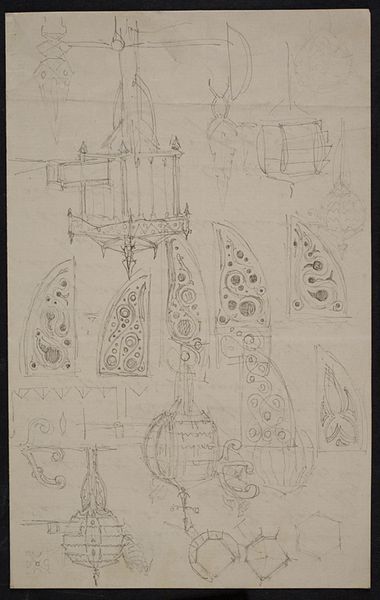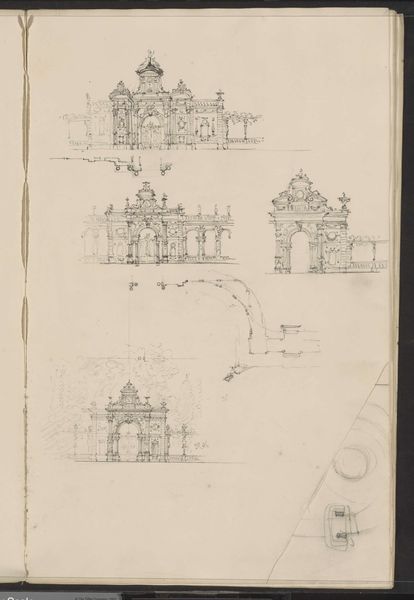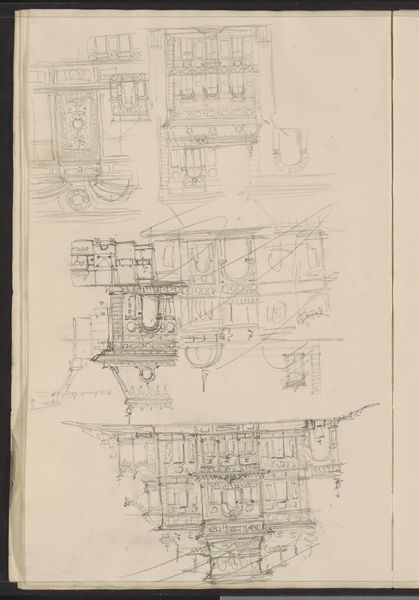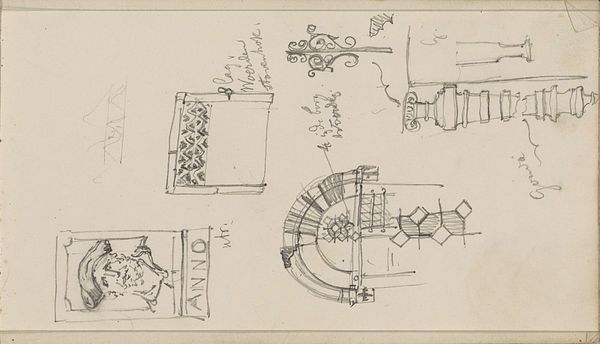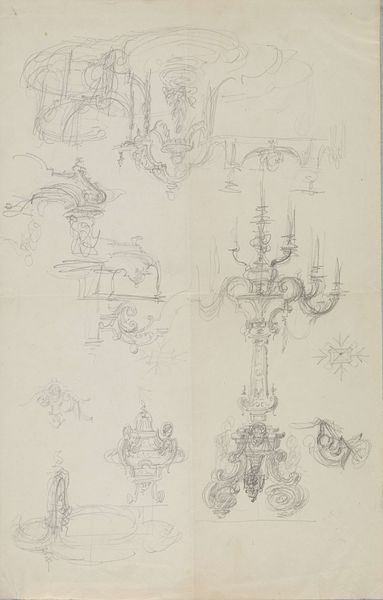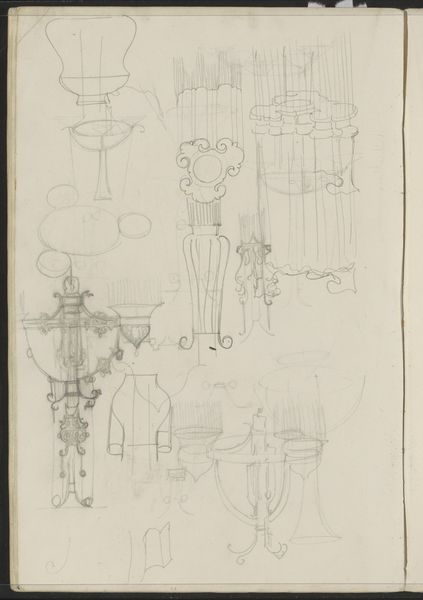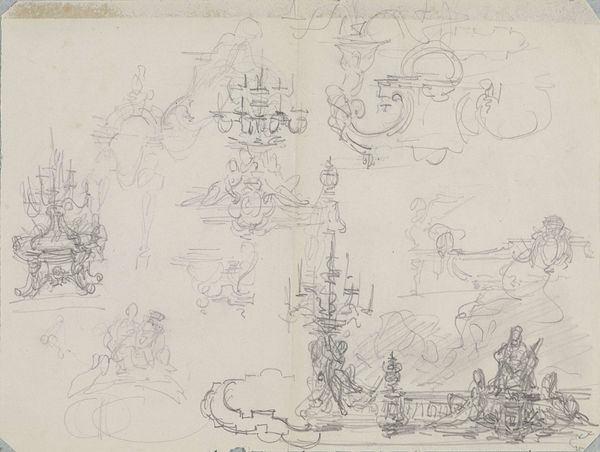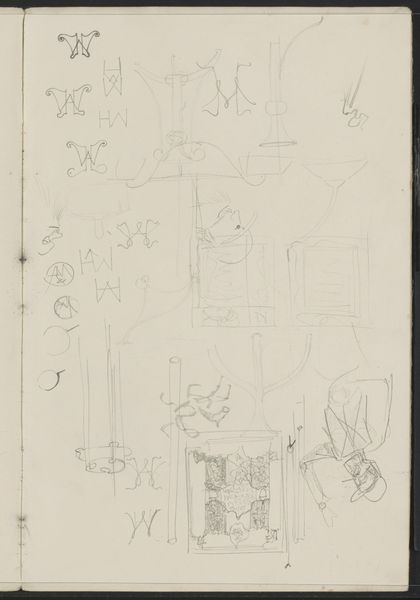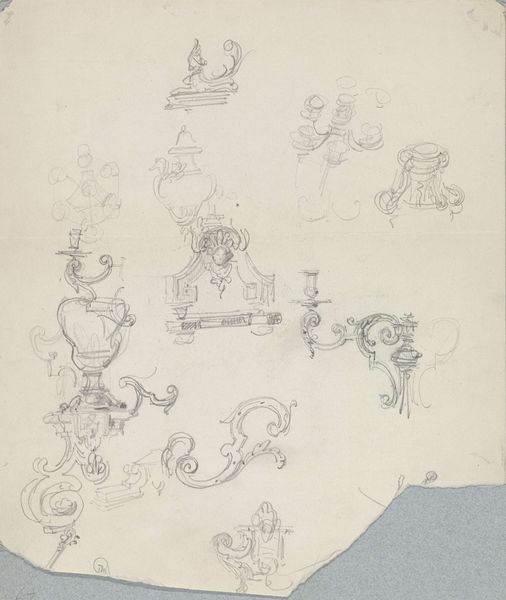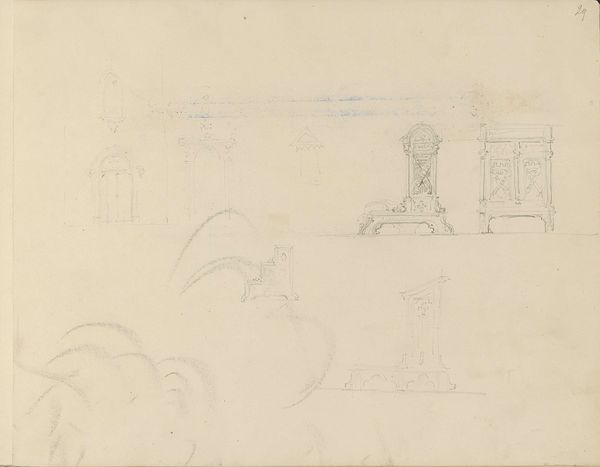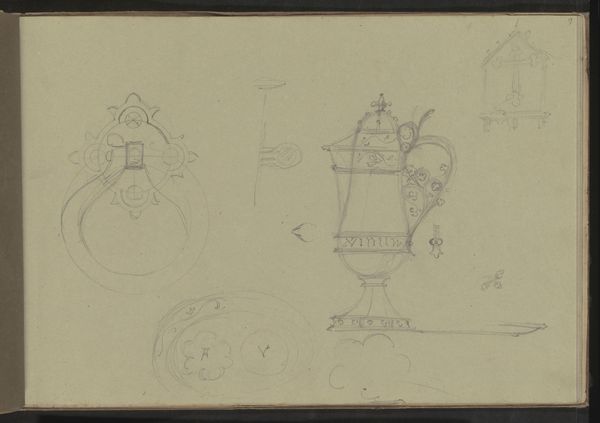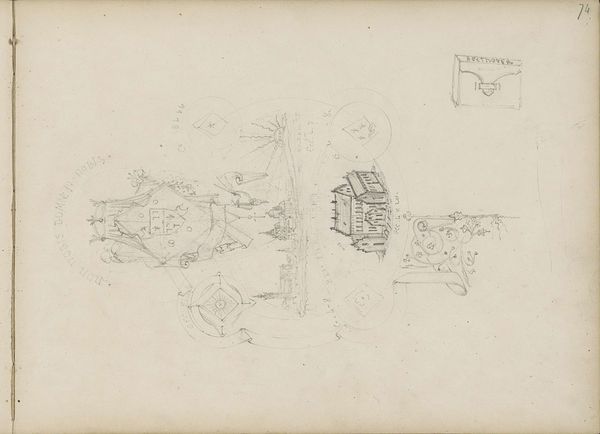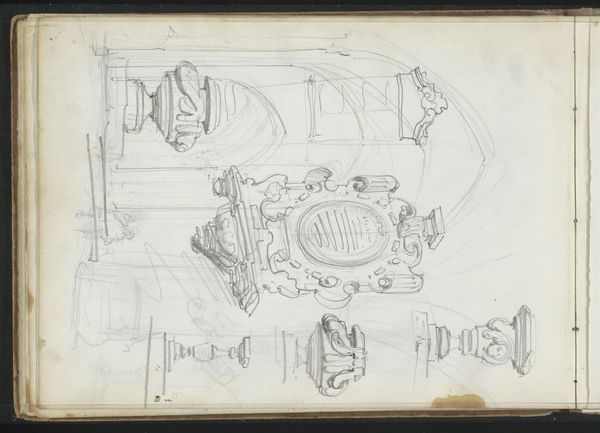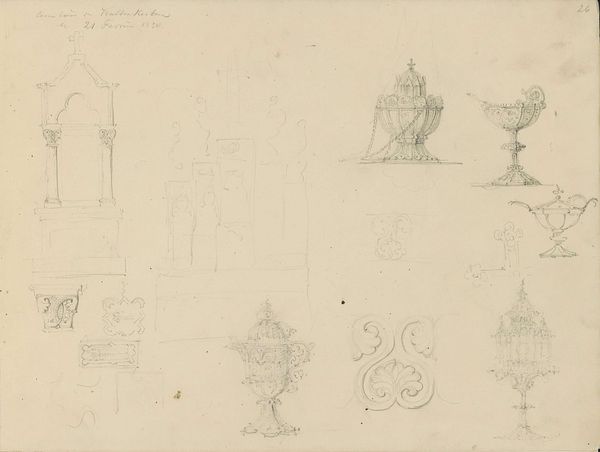
drawing, paper, pen, architecture
#
drawing
#
quirky sketch
#
pen sketch
#
sketch book
#
paper
#
personal sketchbook
#
sketchwork
#
pen-ink sketch
#
pen work
#
sketchbook drawing
#
pen
#
storyboard and sketchbook work
#
sketchbook art
#
architecture
Copyright: Rijks Museum: Open Domain
Editor: This drawing, "Ontwerpen voor poorten, balustrades en plattegronden" by Johan R. Kruyff, made in 1865, uses pen on paper to present these architectural sketches. They remind me of preliminary architectural plans. What strikes you first about this sheet? Curator: Initially, the interplay of line and form captivates me. Consider the confident strokes delineating the gate structures, juxtaposed against the almost ethereal lightness of the circular and rectangular elements, indicating possible spatial arrangements. Kruyff is clearly thinking in three dimensions, translating them onto a two-dimensional plane. Do you notice how the variations in line weight affect your reading of depth and priority within the composition? Editor: I see how the darker lines bring forward the gate designs, making the lighter elements look more like secondary ideas. What is the purpose of including the additional elements besides the gates? Curator: Their function is intrinsically related to the architect's methodology. These are not disparate elements, but components of a cohesive spatial design. They are exercises in form, preliminary investigations of the relationships between solid and void. Observe how the geometry guides your eye across the page, forming implied connections between disparate architectural ideas. Do you feel a sense of rhythm as your eye moves across these elements? Editor: I do see a rhythm in the repeated shapes and how the architect is toying with possible shapes and combinations. It almost looks as if the architect were arranging and re-arranging these features on site. Curator: Precisely! And from a purely formal standpoint, consider how the considered arrangement of these forms on the page, almost like musical notations, contribute to the aesthetic value, transcending its function as a mere architectural blueprint. Editor: I see your point. So it's not just the subject matter, but how he uses lines and forms to create a kind of visual music on the page. I appreciate understanding how looking at art from this formalist point of view creates space for interpretation and wonder!
Comments
No comments
Be the first to comment and join the conversation on the ultimate creative platform.
